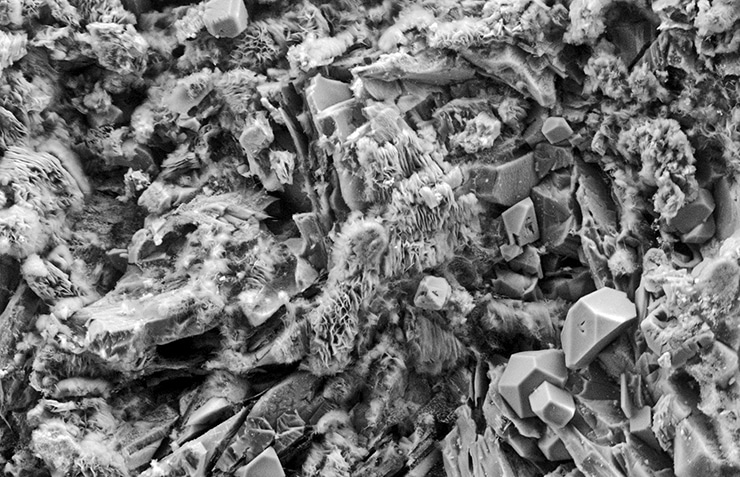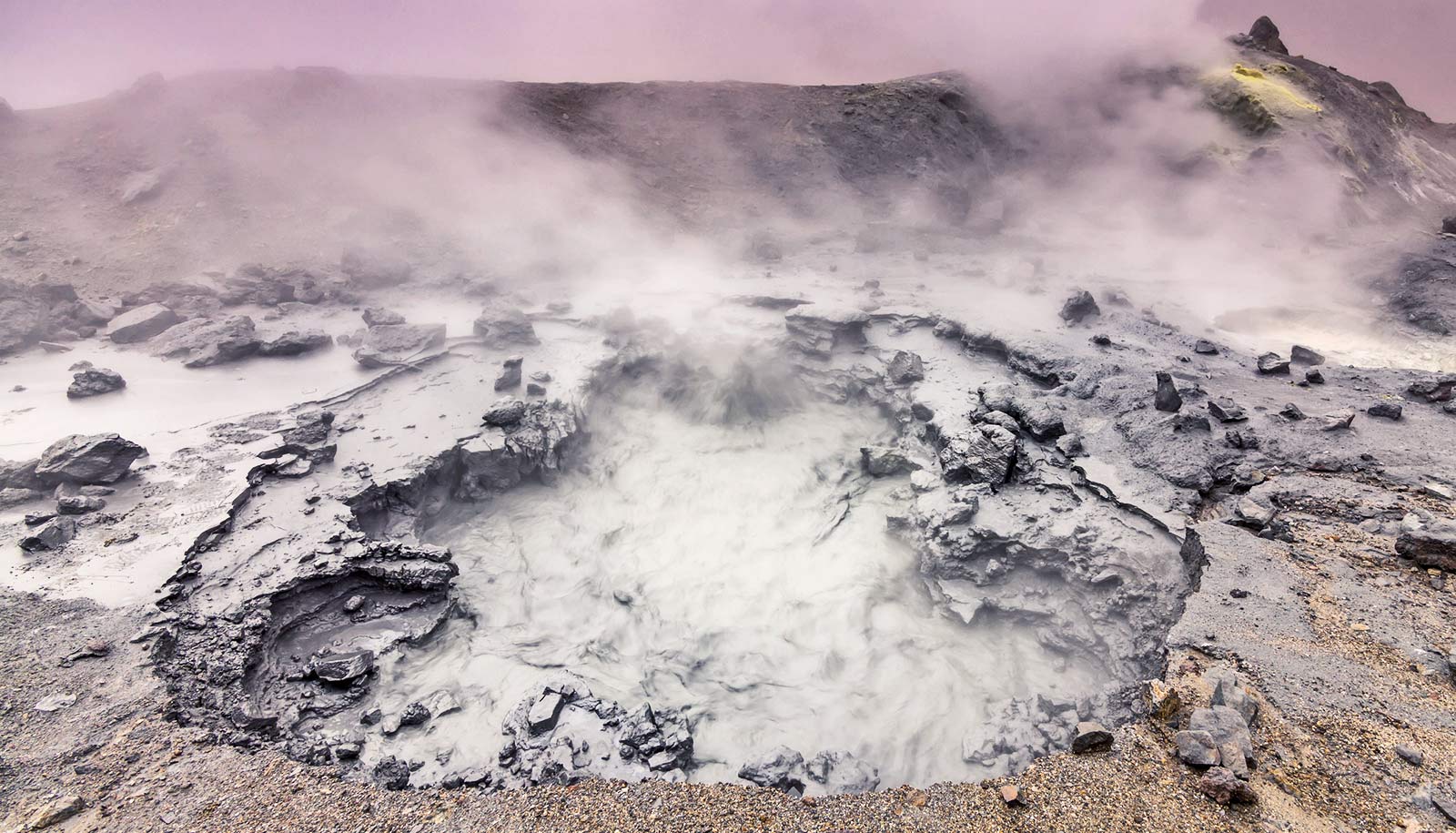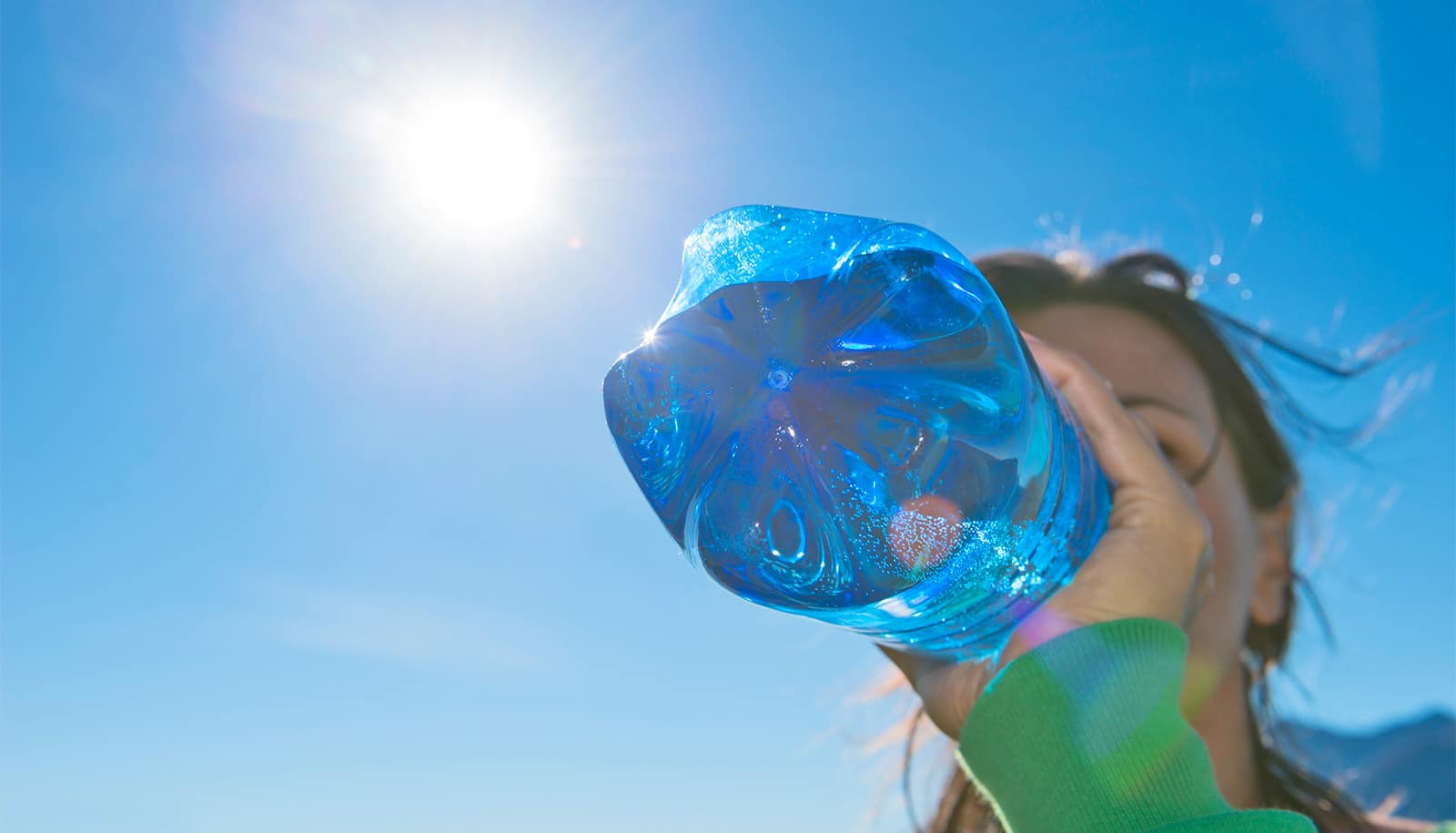The clay on Mars’ surface may have formed as the planet’s crust cooled and solidified, not by later interactions with water on the surface as has long been assumed, new research suggests.
There are thousands of ancient phyllosilicate outcrops on the Martian surface. Phyllosilicates, or clays, are formed by the interaction of water with volcanic rock, leading scientists to conclude that there must have been sustained surface water, groundwater, or active hydrothermal systems at some point in Martian history. The new research, however, suggests that the clay formed far earlier.
Backed by lab experiments and computer models, the researchers lay out how the scenario would have worked in a new paper in the journal Nature.
In the very early solar system, it’s thought that oceans of molten magma covered Mars and other rocky planets. As the Mars magma ocean began to cool and solidify, water and other dissolved volatiles would be outgassed to the surface, forming a thick, steamy atmosphere surrounding the planet.
The moisture and heat from that high-pressure steam bath would have converted vast swaths of the newly solidified surface to clay. As the planet then evolved over billions of years, volcanic activity and asteroid bombardments would have covered the clays in some places and excavated them in others, leading to the widespread but patchy distribution seen on the surface today.
Hot and wet
“The basic recipe for making clay is you take rock and you add heat and water,” says Kevin Cannon, a postdoctoral researcher at the University of Central Florida who led the research while completing his PhD at Brown University.
“This primordial atmosphere created by a magma ocean would have been the hottest and wettest Mars ever was. It’s a situation where you could pervasively alter the crust and then just shuffle those materials around afterward.”
Cannon and his coauthors say the scenario offers a means of creating widespread clay deposits that doesn’t require a warm and wet climate or a sustained hydrothermal system on early Mars. Climate models suggest an early Mars where the temperature rarely crept above freezing and where water flow on the surface was sporadic and isolated.
“One of the complications that comes up in Mars evolution is that we can’t create a scenario where surface weathering had the capacity to produce the extent of mineral alteration that we see,” says coauthor Jack Mustard, a professor of Earth, environmental, and planetary sciences at Brown University.
“We’re certainly not trying to discount other alteration mechanisms entirely. Surface weathering and other types of alteration surely occurred at different points in Martian history, but we think this is a plausible way to explain much of the widespread clay we see in the oldest Martian terrains,” Mustard says.
To demonstrate the mechanism they propose is plausible, researchers made rock samples matching the composition of Martian basalt and then used a high-pressure device to recreate temperature and pressure conditions that may have been present amid the steam atmosphere created by a magma ocean.
After cooking the samples for two weeks, the team checked to see if they had been altered and to what extent.
“It was really remarkable how quickly and extensively this basalt was altered,” Cannon says. “At the highest temperatures and pressures, it ate completely through the basalt particles. It’s a really intense degree of alteration.”

The steam atmosphere associated with a magma ocean could have survived for as long as 10 million years or more, the researchers say—long enough, they estimate, to create as much as three kilometers of clay on the primordial Martian surface.
To get an idea what happened to the clay as the planet evolved, researchers created a computer model to simulate a slab of Martian crust with a three-kilometer clay layer on top and then simulated the first billion years of Martian geologic history—the period when volcanic activity and asteroid bombardment were most prevalent.
Flowing sand, not water, left ‘dark streaks’ on Mars
The model showed that the burial, excavation, and scattering of clays over time created distribution of exposed deposits similar to what’s seen on Mars today.
“To put some numbers on it, clays cover about 3 percent of the oldest crust exposures on Mars. We’re finding about that same order of magnitude in these models,” Cannon says.
Looking forward
While the lab experiments and simulations can’t prove for certain that this scenario occurred, the researchers say, they do suggest a strong hypothesis that researchers could test during future Mars exploration.
“One of the things I like about this is that it’s truly testable,” says study coauthor Steve Parman, a geology professor at Brown. “With a returned sample, or maybe even with the analytical equipment on a rover, I’m optimistic that you could distinguish this primordial process from some other alteration process.”
If the process did indeed occur, it could have some interesting implications for early Martian history, scientists say.
Long-gone lake on Mars resembled those on Earth
In addition to providing a mechanism for clay formation even if Mars was as cold and icy as climate models suggest, the scenario hints that vast deposits of clay were—and might still be—lurking beneath the surface. Those deposits could explain why the Martian crust is less dense than expected for a basaltic crust, the researchers say. The deposits would also serve as large underground storage reservoirs for water.
“There potentially would have been quite a lot of water locked up in these buried clays,” Parman says. “You could imagine that if those deposits were heated up by magmatism or some other process they would have released that water, perhaps providing a transient water supply to the surface. That could have implications for past habitability.”
Mustard, who chaired the committee that laid out the science goals for NASA’s Mars 2020 rover, hopes this new hypothesis could inform future Martian exploration.
“This would be a really interesting hypothesis to test,” he says. “Depending on where the rover ultimately lands, I think we could get the right samples to illuminate these questions.”
Source: Brown University



